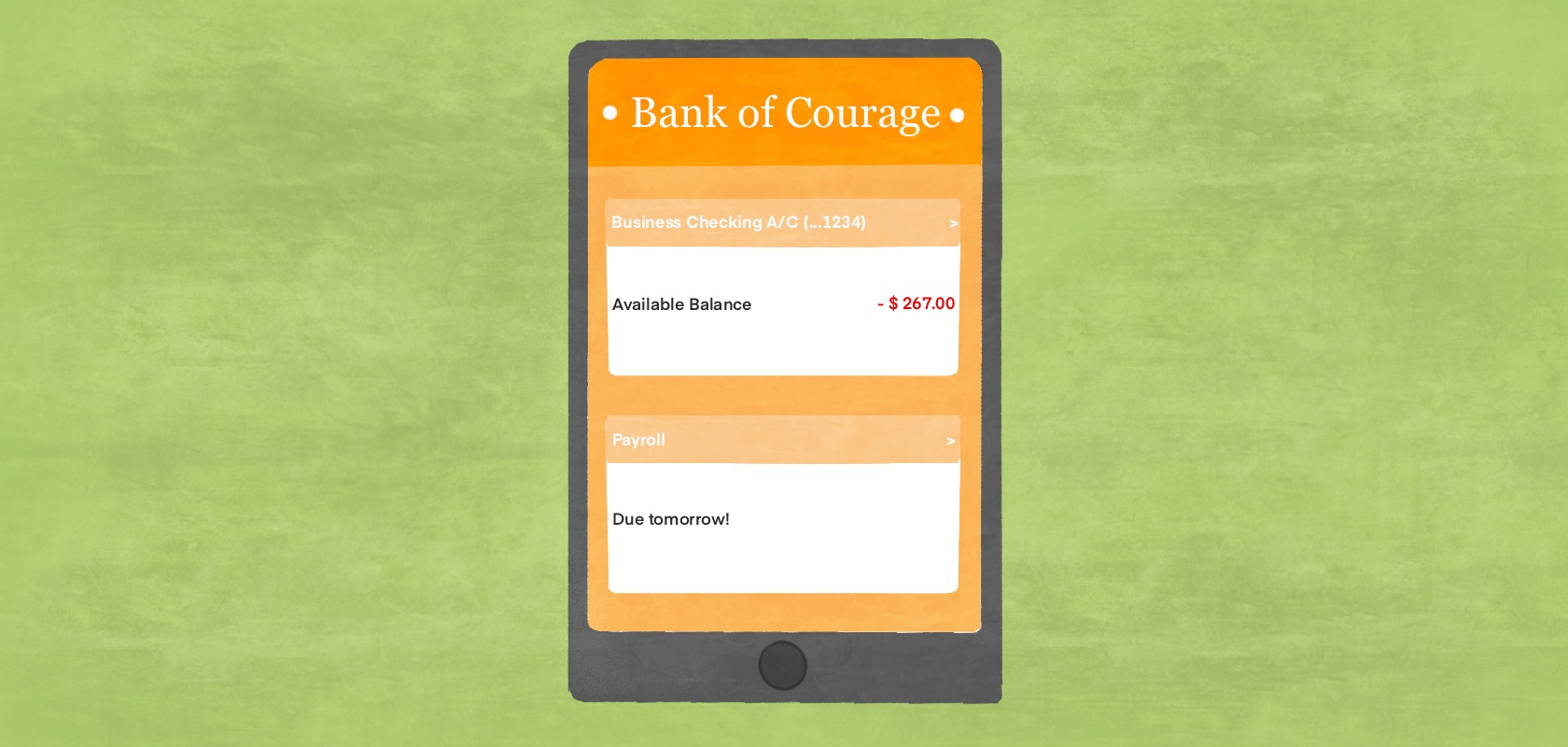Become an insider!
Get our latest payroll and small business articles sent straight to your inbox.
Money management is a core part of running a business of any size, but it can fall by the wayside when other tasks become distracting. If you stop ensuring that all your sums add up, you might not notice a difference immediately, but soon enough your operation will hit a wall.
Worse still, that trouble doesn’t stop at missing payments for equipment or needing to cut back on software licenses. It can cut to the heart of your business: your employees. Even minor payroll issues can snowball into huge problems — people are only so loyal when they’re not getting paid the money they’re owed.
Cash flow vs profit.
The key to this is cash flow. More than profit, cash flow determines the survivability of a business. (Cash flow is particularly vital for a small business because it’s unlikely to have an emergency fund built up). You can get by for a while without making a cent of profit, but the moment you don’t have enough money in your account to meet your financial obligations, you’re in big trouble.
Supposing you’re unfortunate and things go severely wrong. Perhaps a client unexpectedly drops out and your cash flow dries up. How can you keep things ticking over until you can get your finances sorted and get back to work as usual?
Here are seven tips for managing your payroll when you’re going through a tough financial time:
1. Be honest with your employees.
This can be the hardest step to take, but it’s absolutely essential. Taking the sadly common route of gritting your teeth, putting on a brave face and telling everyone that things are fine and there’s no reason to worry is silly in two ways:
- It’ll destroy your employees’ trust in you when they learn the truth.
- They’ll know that things are wrong when they don’t get paid on time.
They’re going to find out what’s happening somehow, so just be honest with them. Call a general meeting and calmly explain the situation, then follow up with your plan for dealing with it. When can people expect to get paid? What can they do in the meantime? How will you make up for the problem? It’s stressful not getting paid, but it’s also stressful looking for new work, so people won’t want to bail on you. Don’t give them an excuse to leave.
 Read more about how you hire and how it affects the bottom line.
Read more about how you hire and how it affects the bottom line.
2. Only stagger pay if it’s voluntary.
The practice of staggering pay — delaying some employee payments, either partially or entirely, while allowing others to go through — is troublesome. Largely because it’s illegal at a federal level. A payment that’s a week late is essentially considered nonpayment and can land you in legal trouble.
Note that this doesn’t mean you can’t do it legally. It simply needs to be voluntary, though if you’re going down that route, it should be the highest-paid employees taking the hit temporarily.
Morale during such a difficult time is always going to be low. Asking people to accept late payment instead of pursuing legal action isn’t going to fly. But, if your biggest earners absorb the cost so your other employees can get paid, you’ll earn a lot of goodwill.
If you’re worried about making payroll and you use payroll software, you should also contact the software company if you’re worried about having insufficient funds and/or need to adjust your current settings or frequency. Otherwise, you could also rack up additional fees.
3. Evaluate your staffing needs.
It’s a sensitive topic, certainly, so you need to address it very delicately — but it’s possible that you’re simply spending too much on payroll. You might be offering too many perks on top of competitive salaries, or paying too much overtime, or paying employees that you don’t really need. If so, you need to take action — though not before you’ve paid everyone.
Only once you’ve found a way through your cash flow issue and settled your payroll obligations, you should take an in-depth look at how your company operates. Identify areas that can be improved, and tweak them as soon as possible to minimize your risk of suffering a recurrence of your cash flow problem.
If you can’t find a simple solution to meeting payroll, you may need to take out a payroll loan to cover your costs while you deal with your cash flow. But what type of loan can you get? See bullets four through seven.
 Read more about insurance policies that can protect against payroll mistakes.
Read more about insurance policies that can protect against payroll mistakes.
4. Consider a business line of credit.
Using a business line of credit is almost as simple as using a credit card. Using your business to justify a large amount of credit, you get to borrow up to a set amount of money. For instance, you could take a line of credit up to $50,000 — what’s more, if you only actually borrowed $30,000, you’d only pay interest for that borrowed amount.
This option is usefully scalable, as you can borrow the amount you need without any restrictions on how you use it. The main downside is that you need to establish your credibility as a business, demonstrating a history of steady revenue, offering paperwork, and potentially even advancing collateral to secure the deal. This means it’s harder for a new business to be approved.
5. Pursue invoice financing.
Invoice financing — otherwise known as accounts receivable financing — is secured against your expected customer payments. For instance, if you have a client that pays sluggishly at times who may have missed a payment but will make that payment eventually — you can get a fast loan in anticipation of that payment arriving.
The downsides of this option are that it’s usually more expensive than a standard loan and that the fees will depend on how long it takes for the invoice to be paid, which can end up proving quite expensive. As such, it’s only something you should consider if you’re against the clock and you absolutely need money very quickly.
6. Look for a short-term loan.
Short-term loans don’t follow any particular procedures relevant to businesses, so they should only be contemplated if you’ve decided you need a loan and you’ve been unable to make any of the two previous approaches work. (If, for instance, you can’t get approved for business credit and don’t have any impending invoice payments to cite.)
Because people only turn to short-term loans in order to solve cash flow problems quickly, the rates are substantially higher than you’d get for different types of loan. If you don’t plan very carefully, you can end up in a much worse financial situation after taking this type of loan than before it. Don’t make this decision in haste.
7. Resort to a hard money lender.
As a second of the emergency “there’s-no-other-way “option, you can go to a hard money lender, though the stakes are even higher. This is because a hard money loan is always secured against a physical asset (typically a piece of property). There’s less documentation involved in the process, but the lender does need to value the asset before deciding.
If you take out a hard money loan and you’re unable to pay it back, you can lose your property. Therefore, don’t take the risk unless you’re absolutely certain you can deal with it. It’s far too dangerous to take something like this lightly. That said, while hard money lending does have a bad name, it can still be used to good effect if you know what you’re getting into. Think it through.
Bonus tip: Google it!
When considering your options, you can also turn to online lenders like Fundera, which is specifically designed for lending to small businesses. All you have to do is complete one application to be connected to a network of lenders. They also have a lot of well-written information on small business lending.
The advice we share on our blog is intended to be informational. It does not replace the expertise of accredited business professionals.












